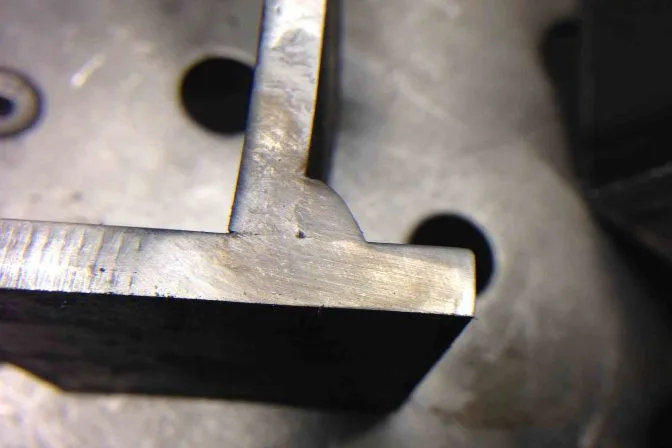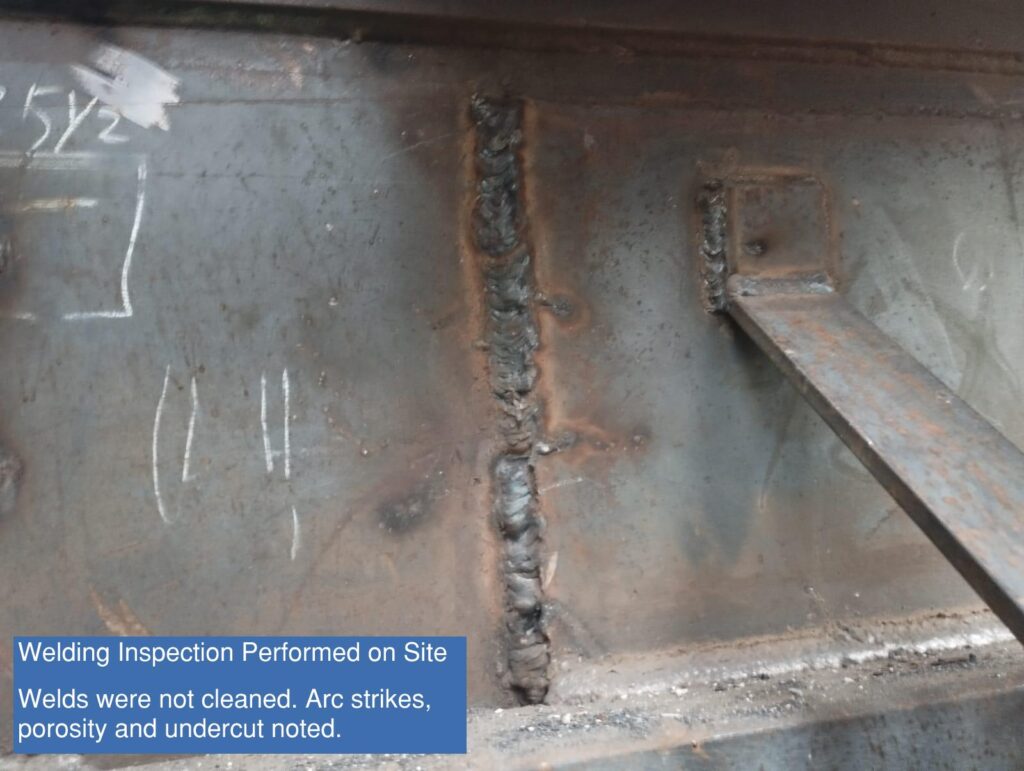What to Get out of a Comprehensive Welding Inspection Racine
What to Get out of a Comprehensive Welding Inspection Racine
Blog Article
Innovative Methods to Fillet Weld Evaluation and Testing: Enhancing Weld High Quality and Compliance Standards
In the realm of welding, the high quality and honesty of fillet welds play an important role in making certain the structural sturdiness and integrity of numerous commercial components. With the constant drive for enhanced effectiveness and compliance with rigorous criteria, the exploration of cutting-edge techniques to fillet weld inspection and testing has actually ended up being crucial.
Advanced Non-Destructive Testing Methods
Utilizing modern technologies, advanced non-destructive screening techniques play a crucial function in guaranteeing the stability and quality of fillet welds. These methods, such as phased range ultrasonic screening (PAUT) and magnetic fragment screening (MPT), deal in-depth understandings into the weld's interior structure without creating any damages to the product. PAUT, as an example, uses several ultrasonic components to evaluate the weld from numerous angles, offering a detailed visualization of potential defects like absence of fusion or cracks.
In A Similar Way, MPT is effective in detecting surface-breaking defects by using a magnetic field and iron fragments to the weld area. This method is especially useful for determining gaps that might compromise the weld's strength. By using these innovative non-destructive screening techniques, weld assessors can accurately examine the high quality of fillet welds, guaranteeing conformity with market criteria and policies. The capacity to spot flaws early not just enhances weld quality but likewise protects against costly rework or failings in architectural integrity, highlighting the significance of these innovative testing techniques in welding examinations.
Robotics and Automation in Examination
The integration of robotics and automation has revolutionized the inspection process for fillet welds, boosting performance and accuracy in high quality assessment. Robotics provide accurate control and repeatability in evaluating welds, making sure consistent and reliable results. Automated systems can be configured to follow details evaluation paths, making sure extensive coverage of welds and lowering the risk of human mistake.
Robot inspection systems geared up with advanced sensors can identify and gauge weld attributes with high accuracy, giving in-depth information for evaluation. These systems can determine problems such as cracks, lack of combination, and porosity, making it possible for punctual rehabilitative actions to be taken. In addition, robotics and automation enable real-time information collection and evaluation, providing instant responses to drivers and assisting in quick decision-making processes.
Moreover, using robotics and automation in fillet weld evaluation enhances general performance by minimizing inspection times and raising inspection throughput. By improving the assessment procedure, producers can guarantee weld quality and compliance requirements are met successfully, ultimately resulting in set you back financial savings and enhanced item quality.
Using Expert System for Analysis
Fabricated intelligence plays an essential duty in improving the effectiveness and accuracy of analysis in fillet weld assessment procedures. AI algorithms can rapidly refine huge amounts of information from weld assessments, detecting issues or inconsistencies that might be challenging to identify with the nude eye - Welding Inspection Racine.
Moreover, AI systems can gain from previous examination data, consistently improving their capability to recognize potential issues and deviations in fillet welds. This flexible discovering capability enhances the general top quality control process, lowering the chance of human mistake and ensuring that welds fulfill the called for criteria. By integrating expert system into fillet weld analysis, markets can achieve higher levels of effectiveness, consistency, and compliance in their inspection techniques.
Portable Equipment for On-Site Evaluation
 Enhancing field evaluation efficiency, the adoption of portable tools changes on-site analysis processes for fillet welds. These tools provide flexibility and benefit, allowing inspectors to conduct extensive exams in different places, including tough or remote settings. Mobile devices such as ultrasonic screening read tools, magnetic particle inspection equipment, and digital radiography systems offer real-time information and high-resolution imaging capabilities, making it possible for fast decision-making and instant responses on weld quality.
Enhancing field evaluation efficiency, the adoption of portable tools changes on-site analysis processes for fillet welds. These tools provide flexibility and benefit, allowing inspectors to conduct extensive exams in different places, including tough or remote settings. Mobile devices such as ultrasonic screening read tools, magnetic particle inspection equipment, and digital radiography systems offer real-time information and high-resolution imaging capabilities, making it possible for fast decision-making and instant responses on weld quality.One substantial benefit of portable devices is their capacity to simplify examination procedures, reducing downtime and improving overall efficiency. Examiners can quickly deliver these devices to different job websites, getting rid of the demand for moving heavy machinery or elements to off-site facilities. Furthermore, the portability of these devices advertises cost-effectiveness by minimizing transport expenditures and increasing assessment timelines.
Moreover, the use of portable devices for on-site evaluation advertises aggressive quality assurance steps, as assessors can without delay identify and address any kind of possible welding issues or disparities. By incorporating these ingenious modern technologies right into on-site assessment methods, welding specialists can make certain conformity with market standards and boost weld high quality, ultimately bring about improved structural honesty and safety in different welding applications.
Assimilation of Data Management Systems
Having actually optimized on-site assessment procedures with the application of mobile devices, the following stage entails the seamless combination of information monitoring systems to additionally improve performance and data evaluation capacities in fillet weld assessment and testing. Welding Inspection Racine. By integrating information management systems into the inspection procedure, companies can enhance data collection, storage space, and evaluation. This combination allows for real-time surveillance of weld top quality, prompt recognition of problems, and timely decision-making to remedy any type of concerns that might develop during the assessment procedure
Information monitoring systems play a vital duty in streamlining assessment information, facilitating very easy accessibility for accredited personnel, and ensuring information honesty and security. With the combination of these systems, inspectors can generate comprehensive records, track historical information for trend evaluation, and boost overall procedure efficiency. Moreover, the combination of information administration systems makes it possible for smooth communication in between various stakeholders involved in the inspection process, promoting collaboration and boosting overall quality assurance actions. Inevitably, the combination of data management systems offers to elevate the standards of fillet weld examination and screening, ensuring compliance with industry regulations and boosting weld high quality.
Verdict
In conclusion, ingenious methods to fillet weld inspection and screening have actually substantially enhanced weld top quality and conformity criteria. Advanced non-destructive testing methods, robotics, automation, artificial knowledge, portable tools, and data management systems have reinvented the method weld assessments are performed. By using these technologies, markets can guarantee that welds satisfy the required high quality requirements and laws, ultimately boosting you can look here general efficiency and safety and security in welding procedures.

By utilizing these advanced non-destructive screening strategies, weld assessors can precisely examine the quality of fillet welds, ensuring compliance with sector requirements and laws. Portable devices such as ultrasonic testing tools, magnetic particle inspection equipment, and digital radiography systems supply real-time data and high-resolution imaging capabilities, allowing fast decision-making and immediate comments on weld high quality.
Having enhanced on-site examination procedures via the use of mobile tools, the following stage includes the smooth combination of information monitoring systems to further boost performance and data evaluation abilities in fillet weld evaluation and testing (Welding Inspection Racine). Inevitably, the assimilation of data administration systems offers to elevate the requirements of fillet weld evaluation and testing, guaranteeing conformity find more information with sector policies and enhancing weld quality
 In conclusion, cutting-edge strategies to fillet weld assessment and testing have actually significantly enhanced weld top quality and compliance criteria.
In conclusion, cutting-edge strategies to fillet weld assessment and testing have actually significantly enhanced weld top quality and compliance criteria.Report this page